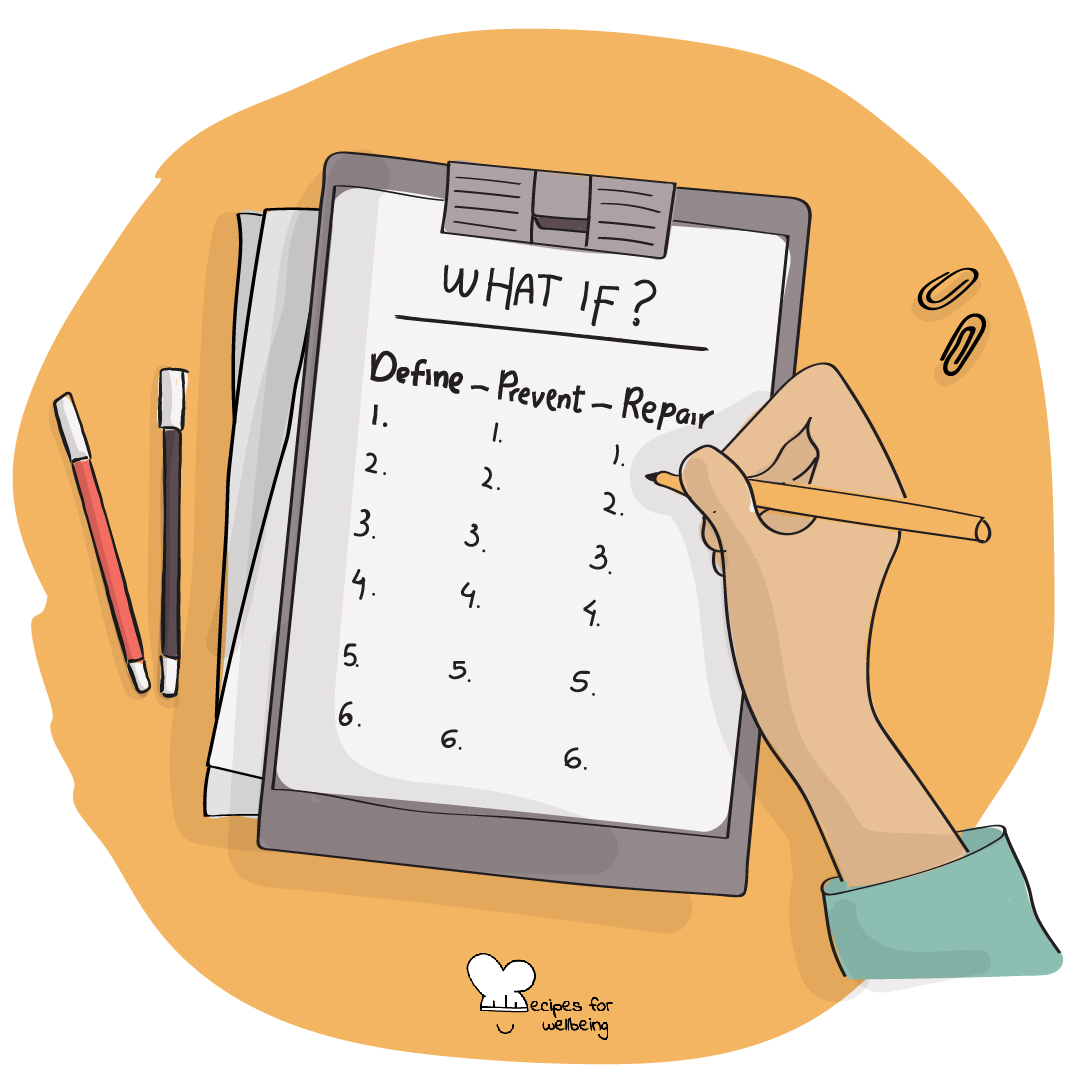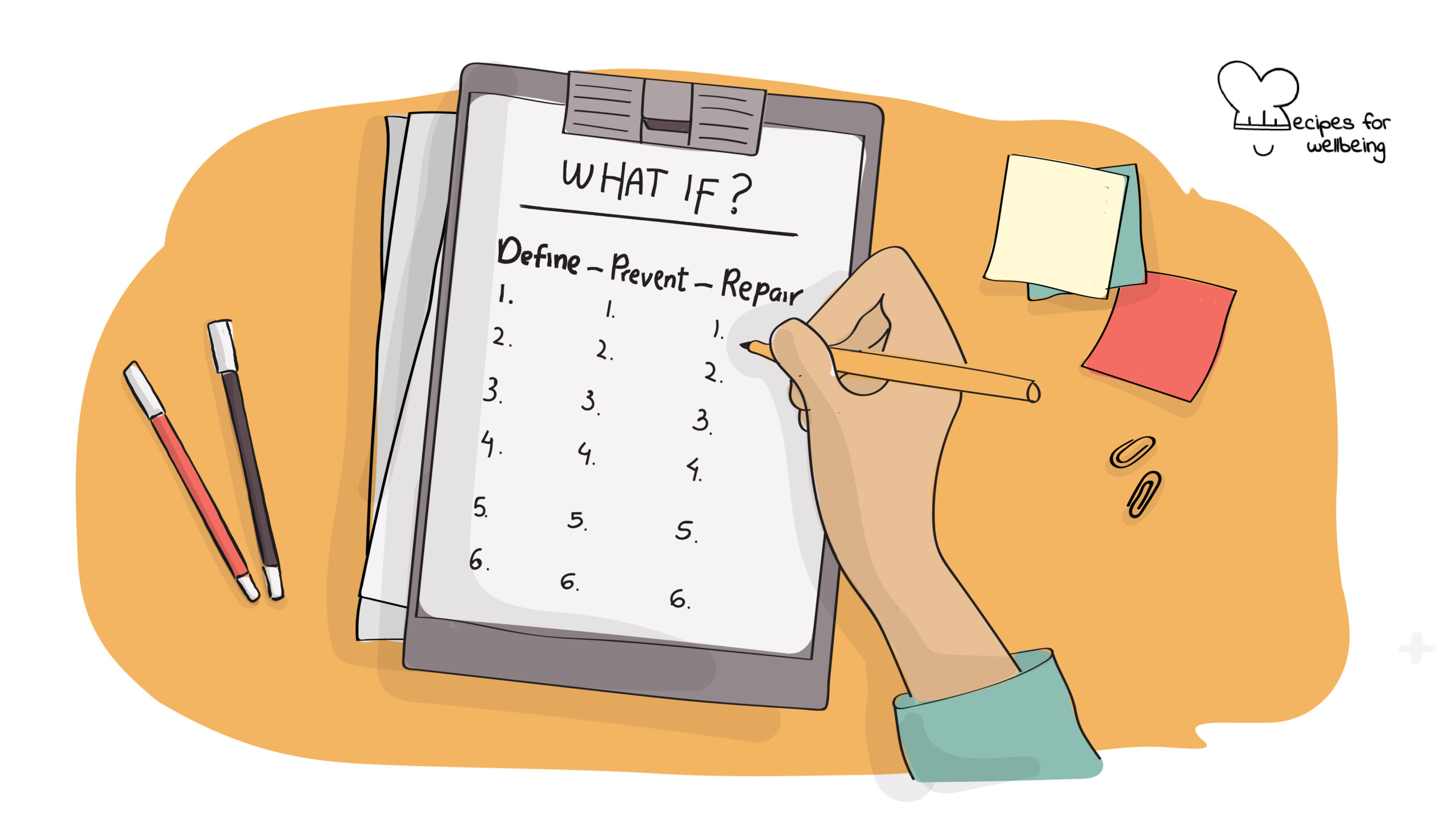
Fear setting to make difficult decisions
We suffer more often in our imagination than in reality. ―Seneca
👥 Serves: 1 person
🎚 Difficulty: Medium
⏳ Total time: 61-120 minutes
🥣 Ingredients: Templates, 1 pen
🤓 Wholebeing Domains: Discomfortability, Liberatory Learning
💪 Wholebeing Skills: Challenging, Decision-making, Liberation, Self-directed learning, Vulnera-bravery

Fear setting to make difficult decisions
📝 Description
Overcoming your paralysis by visualising your fears.
Does fear or what might happen completely paralyse you and stop you from taking action? Then this recipe is for you! The following tool can help you take difficult actions and overcome paralysis by visualising the worst-case scenarios that you currently fear. It is inspired by Tim Ferriss (born July 20, 1977), an American podcaster, author, entrepreneur, and early-stage tech startup investor. Tim hosts a podcast called “The Tim Ferriss Show”. In 2017, because of bipolar depression, which runs in his family, he experienced over 50 major depressive episodes – some leading up to suicidal thoughts and planning. In comparison, the average person has 6-10 major depressive episodes in their entire life.
Fear-setting, akin to goal-setting, is an exercise which is a result of him taking good notes during his ‘rounds in the ring with darkness’. It is one of his best recipes for avoiding self-destruction and self-paralysis (and to make business decisions!). The philosophical background of this exercise is Stoicism, a philosophical perspective on life that can be described as an ‘operating system for striving in high-stress environments’. This operating system helps you to learn how to separate what you can control from what you cannot control so that you may focus exclusively on the former.
We encourage you to watch Tim Ferriss’ TED Talk “Why you should define your fears instead of your goals”. The following recipe has been donated by Pascal Kolbe from the Ikigai Lab at the Interdisciplinary Research Center (CRI) in Paris, France.
👣 Steps
Step 1 – Download the slides (5’)
Download the slides of the working book as a PDF and print them OR copy the setup on blank sheets of paper.
Step 2 – First page (30’)
Think about what is currently bothering you in your life. Identify an action that you could take to improve the situation but dare not to. For example: What if I stopped working on my startup for three weeks and went somewhere to recover from my burnout? What if I asked for a break with my partner to figure out what I want in a relationship? What if I talked to my professor and asked them for an extension for my master thesis?
Look at the first column – define – and write down all the worst things you could imagine happening if you took that step (anything between 10 and 20 is good). Then turn to the second column – prevent – and write down what you could do to prevent each worst thing on your list from happening or, at the very least, decrease the likelihood of it happening. Finally, in the last column – repair – imagine that the worst case scenario has happened. What could you do to repair the damage, even a little bit, or who could you ask for help?
One question to keep in mind while going through this first page is: “Has anyone else in the history of time, less intelligent or less driven, figured this out? Chances are the answer is yes” (Tim Ferris).
Step 3 – Second page (15’)
On the second page, answer the question in the middle: “What might be the benefits of an attempt or partial success?” What might you gain in the process, e.g. building confidence, developing skills (emotional, financial, etc.)?
Step 4 – Third page (20’)
This page might be the most important one, so whatever you do, don’t skip it. We are very good at considering what might go wrong if we tried something new, let’s say ‘ask for a raise’, but what we often do not consider is the atrocious cost of the current status quo, i.e. not changing anything. Look at the third page and answer this question: “If I avoided this action and decision, or actions and decisions, what might my life look like in 6 months, 12 months, 3 years?”
Step 5 – Acting or not acting? (20’)
To facilitate making a decision, you can look at both the positive and the negative outcomes and assess them on a scale from 1 (minimal impact) to 10 (maximal impact). Based on the outcomes, you may make a more balanced and reasoned decision, with the full awareness of why you are taking that particular action (or inaction) as well as the potential risks and how to overcome them. Tim Ferriss suggests doing this fear-setting exercise at least once every three months.

